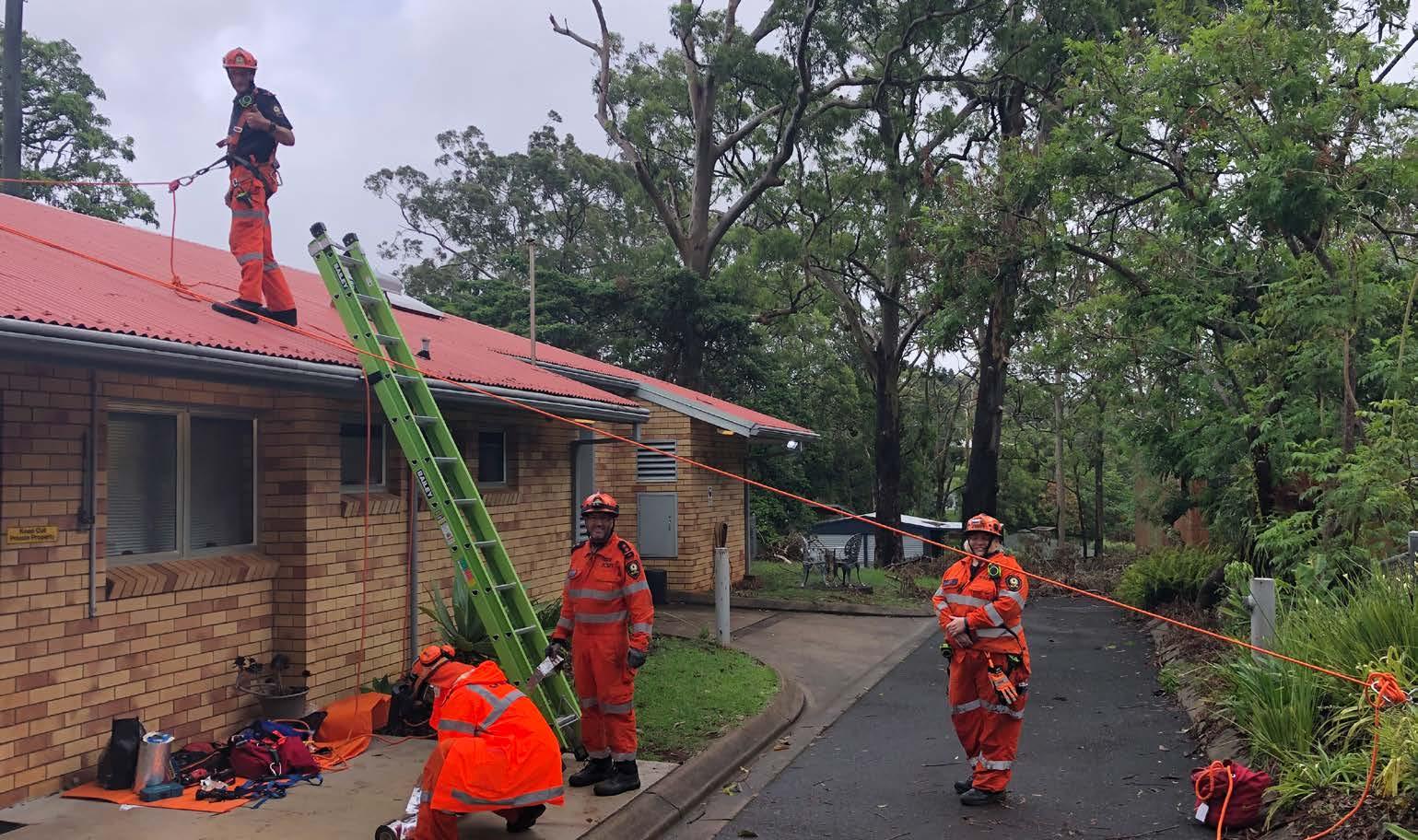
Rim Regional Council
Footnotes:


Rim Regional Council
Footnotes:
The Scenic Rim Recovery and Resilience Sub Plan which is an annexure to the Scenic Rim Local Disaster Management Plan are privileged and confidential and not available for distribution to the general public.
Scenic Rim Regional Council permits the use of material contained in the Scenic Rim Recovery and Resilience Sub Plan being reproduced for research or planning purposes provided that any material used remains unaltered and due recognition of the source of the materials is recognised.
Any party using the information for any purposes does so at their own risk and releases and indemnifies Scenic Rim Regional Council against all responsibility and liability (including negligence, negligent misstatement and pure economic loss) for all expenses, losses, damages and costs as a consequence of such use.
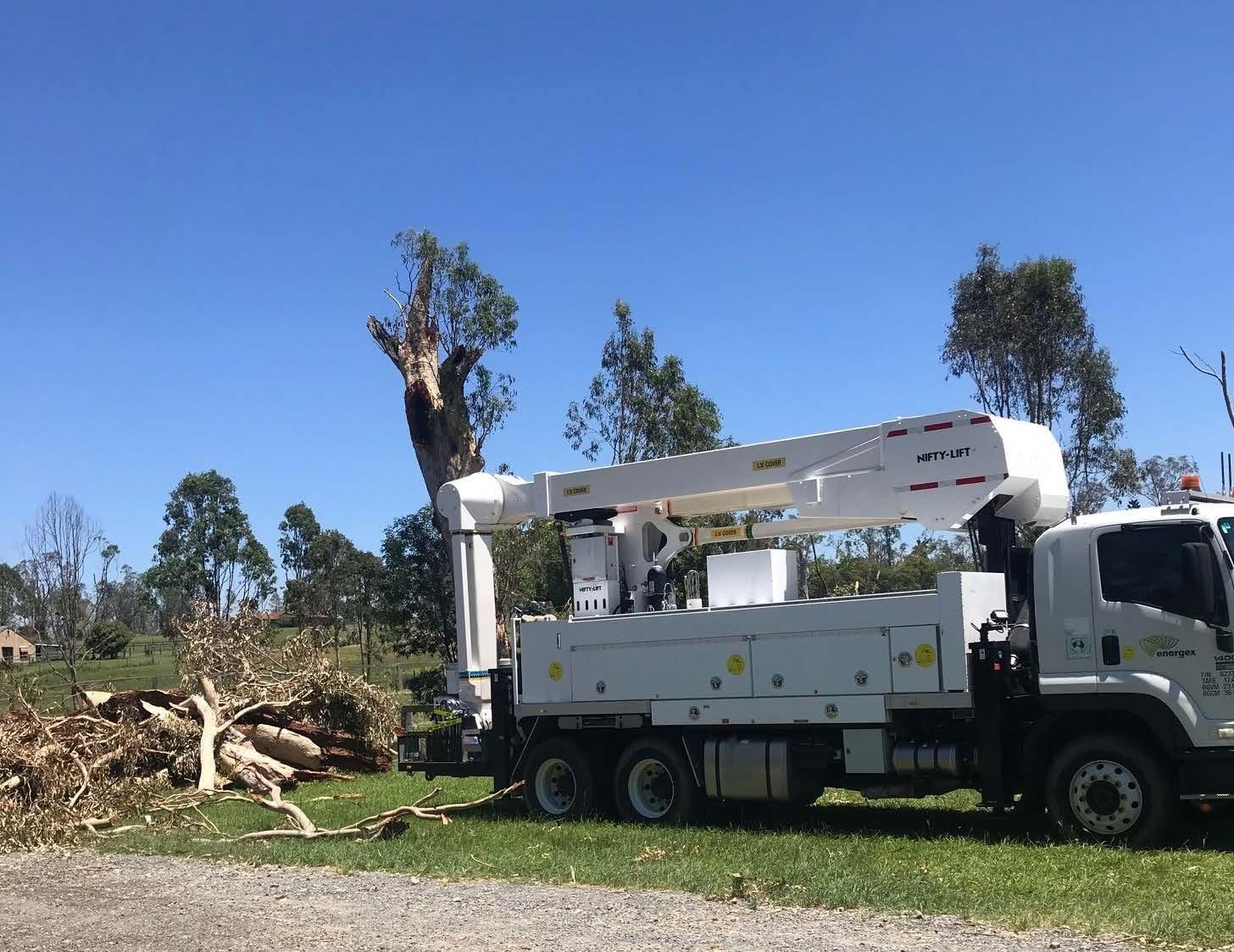
The Scenic Rim Recovery and Resilience Sub Plan, version number 1.1 dated 18 September 2024 has been endorsed by the Scenic Rim Local Recovery & Resilience Group.
The Scenic Rim Recovery and Resilience Sub Plan is hereby approved for distribution.
Recovery Project Manager, Scenic Rim Regional Council
Local Recovery Coordinator
Dated: 18 September 2024
Councillor Division 1
Chair, Scenic Rim Local Recovery & Resilience Group
Dated: 24 September 2024
1 Developed document Scenic Rim Regional Council, Disaster Management Coordinator, Alisa Totenhofer 19 April 2023
1.1 Review and rewrite document
Scenic Rim Regional Council, Recovery Project Manager, Karla Schilg 18 Sept 2024
This is a living document, if printed this document will become out of date. For the most current version of this document, please request a copy from Scenic Rim Regional Council’s Disaster Management team.
All proposed amendments to the Scenic Rim Recovery and Resilience Sub Plan are to be submitted in writing to the Scenic Rim Local Recovery & Resilience Group at the address below:
Local Recovery Coordinator
Scenic Rim Local Recovery & Resilience Group
Scenic Rim Regional Council
PO Box 25
BEAUDESERT QLD 4285 Recovery@scenicrim.qld.gov.au
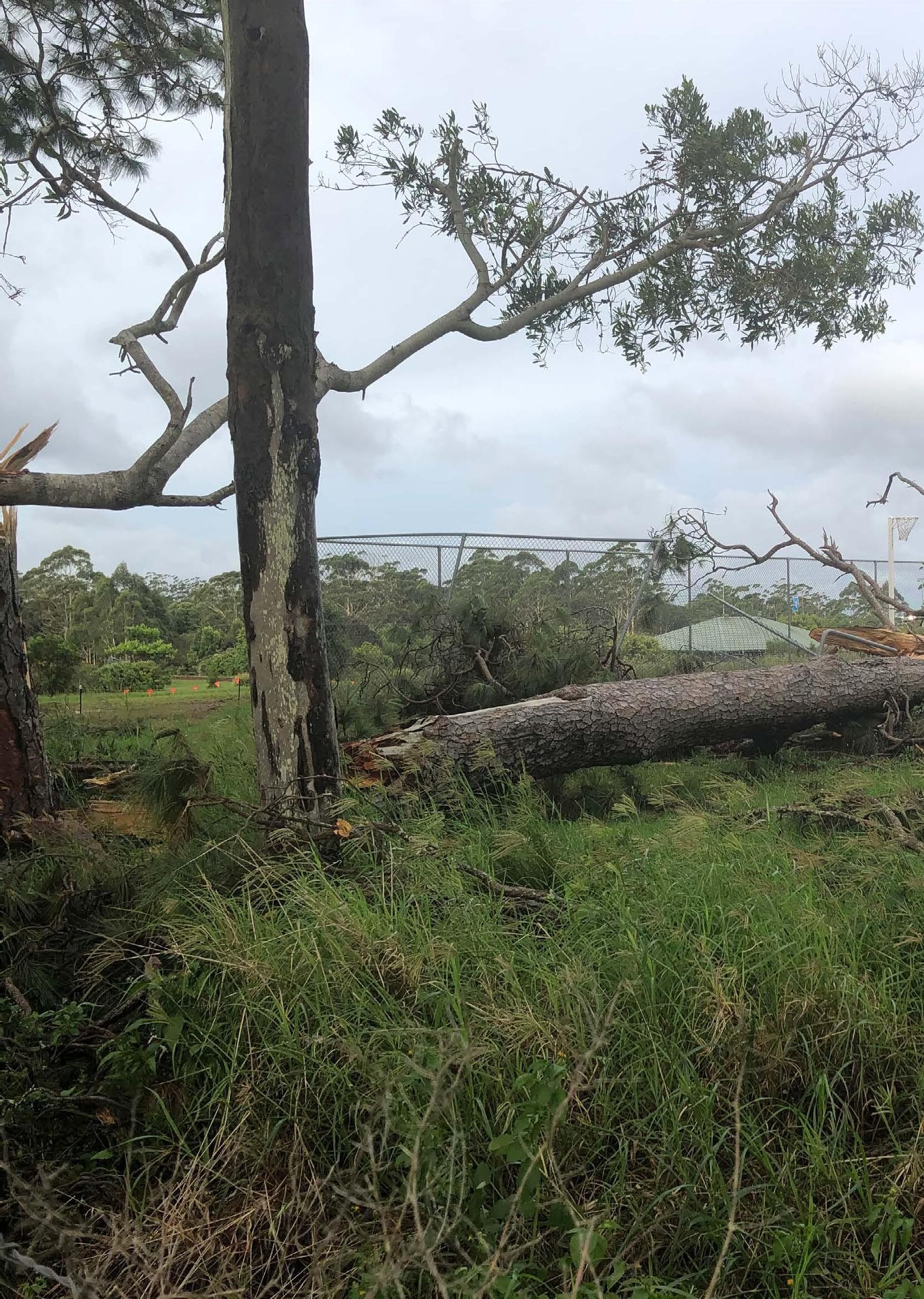

The purpose of the Scenic Rim Regional Council Recovery & Resilience Sub Plan is to guide the Members of the Local Recovery & Resilience Group (LRRG) efforts, approaches, planning and decision making throughout the phases of recovery. Recovery is a part of disaster management, which includes the broader components of prevention, preparedness and response.
It includes recovering from damage to the built, environmental and economic elements, as well as social wellbeing.
Recovery can provide an opportunity to improve these aspects beyond previous conditions, by enhancing social, natural environments, infrastructure and economies, building towards a more resilient community.

Community led recovery is essential. Disasters can deeply impact individuals lives and livelihoods, and helping communities recover from disasters can be challenging and complex. This plan focuses on the LRRG roles and responsibilities, recognising the lead agency role of various State agencies, and takes a cooperative, multi-agency approach to disaster recovery, ensuring recovery operations are integrated, locally led and appropriate to the scale of the disaster event.
The objectives of this plan are to support and build capacity, to remove barriers, to enable and use local knowledge and strengths and implement effective strategies within the Scenic Rim region.
This is achieved by:
Describing the Scenic Rim local disaster recovery structure and functional lead agency responsibilities.
Identifying the roles and responsibilities of the LRRG.
Establishing the local context for human-social, infrastructure, environmental and economic impacts.
Identifying recovery activities and operational processes. Providing practical information for the delivery of recovery services to the community.
Ensure community participation and a community-led recovery process.
Promoting and supporting the enhancement of resilience through recovery.
This plan is developed by Scenic Rim Regional Council. This Plan is consistent with the following; The National Principles for Disaster Recovery1, Queensland Recovery Plan2 , Queensland Prevention, Preparedness, Response, Recovery and Resilience (PPRRR) Disaster Management Guidelines3, Queensland Strategy for Disaster Resilience 20174 and the IGEM Standard for Disaster Management in Qld5.
This plan forms a sub plan of the Scenic Rim Local Disaster Management Plan (LDMP) and will be managed in accordance with the administrative and governance processes outlined within the LDMP including approval, document control, distribution and review.
This plan applies to the disaster recovery efforts after emergency/disaster events that can occur within the Scenic Rim local government area, whereby local resources are sufficient to deal with the process of recovery.
If local resources are insufficient to deal with the recovery process, a request may be made to the District Disaster Management Group (DDMG) for additional resources, assistance and/or activation of the Logan District Human and Social Recovery Plan.
If the Logan District Human and Social Recovery Plan is activated, the LRRG may be required to assist the Logan District Human and Social Recovery Committee in undertaking recovery operations as determined by the Chair of the Logan District Human and Social Recovery Committee.
1Australian Institute for Disaster Resilience (2023) National Principles for Disaster Recovery, https://knowledge.aidr.org.au/ resources/national-principles-for-disaster-recovery/ 2Queensland Reconstruction Authority (2023) Queensland Recovery Plan, https://www.qra.qld.gov.au/recovery/recovery-governance/queensland-recovery-plan 3Queensland Fire Department (2018) Queensland Prevention, Preparedness, Response, Recovery and Resilience (PPRRR) Disaster Management Guideline, https:// www.disaster.qld.gov.au/disaster-management-guideline 4Queensland Reconstruction Authority (2022-2027) Queensland Strategy for Disaster Resilience, https://www.qra.qld.gov.au/qsdr 5Standard for Disaster Management in Queensland. Standard for Disaster Management in Queensland | IGEM
Disaster recovery is the coordinated process of supporting disaster-affected communities’ psychosocial (emotional and social) and physical wellbeing, reconstruction of physical infrastructure and economic and environmental restoration (including regeneration of the natural environment, associated infrastructure and heritage sites and structures and the management of pollution and contamination)6.
Recovery is a long-term, multilayered social and developmental process more than replacing what has been destroyed and rehabilitating those affected.
Recovery provides an opportunity to improve aspects beyond previous conditions by enhancing social infrastructure, natural and built environments, and economies.
Things to know about recovery: Recovery goes beyond providing food and shelter.
Recovery is very complex. Recovery takes a long time. Recovery starts immediately post disaster.
There is no clear definition of when recovery stops.
Recovery from a disaster event can include the following7:
Providing immediate support measures to assist persons affected by the event who
do not have resources to provide for their own personal wellbeing.
Restoring essential infrastructure in the area or areas affected by the event.
Restoring the environment in areas affected by the event.
Providing personal support to individuals affected by the event, including temporary hospital accommodation, emergency medical supplies, material assistance and counselling services.
Supporting community development activities to restore capacity and resilience.
6Queensland Reconstruction Authority. Queensland Recovery Plan. (2023). p.g. 6. https://www.qra.qld.gov.au/recovery/ recovery-governance/queensland-recovery-plan 7Queensland Reconstruction Authority. Queensland Recovery Plan. (2023). https://www.qra.qld.gov.au/recovery/recovery-governance/queensland-recovery-plan
Disasters can deeply impact lives and livelihoods. Working with communities recovering from disasters is complex and challenging. The following National Principles for Disaster Recovery are a way to guide our efforts, our approach, our planning and our decision-making to achieve successful recovery.
Understand the context Recognise complexity Use communityled approaches Coordinate all activities Communicate effectively
Successful recovery is based on an understanding of the community context, with each community having its own history, values and dynamics.
Successful recovery is responsive to the complex and dynamic nature of both emergencies and the community.
Successful recovery is communitycentred, responsive and flexible, engaging with community and supporting them to move forward.
Successful recovery requires a planned, coordinated and adaptive approach, between community and partner agencies, based on continuing assessment of impacts and needs.
Successful recovery is built on effective communication between the affected community and other partners
Acknowledge and build capacity
Successful recovery recognises, supports and builds on individual, community and organisational capacity and resilience.
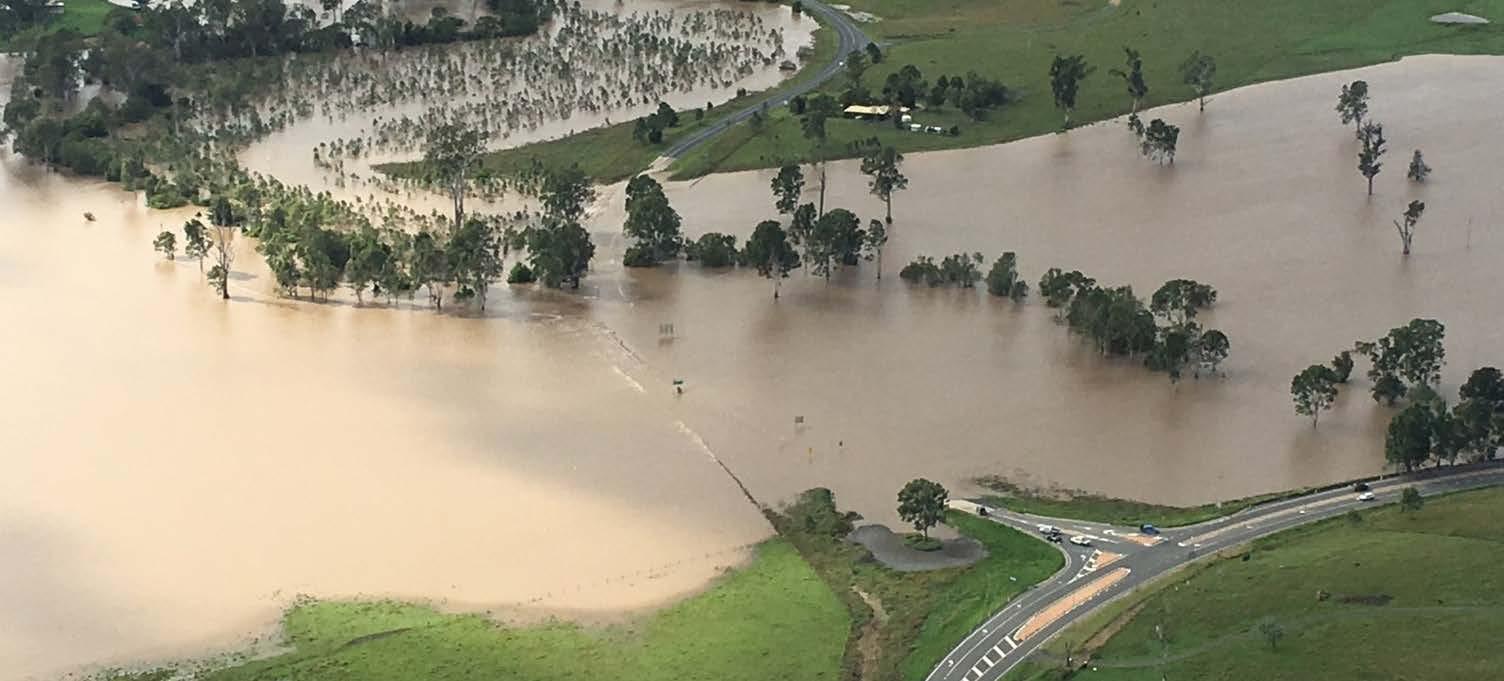
The Standard for Disaster Management in Queensland8 (the Standard) establishes the outcomes to be achieved for all entities involved in disaster management. The Office of the Inspector General Emergency Management (IGEM) manages the Standard in Queensland.
The Standard establishes the outcomes to be achieved for all entities involved in disaster management. It consists of Shared Responsibilities, Outcomes, Accountabilities and Indicators.
The shared responsibilities are the elements of disaster management that all entities should deliver against and that everyone within the sector is responsible for contributing to. Several of the outcomes within the Standard relate to the successful outcomes for Recovery. The key focus for the Scenic Rim Recovery arrangements are the following:
Outcome 5 — Entities proactively and openly engage with communities.
Outcome 6 — The community makes informed choices about disaster management and acts on them.
Outcome 11 — Recovery operations minimise the negative impacts of an event on the community and provide the support needed for recovery.
Outcome 12 — Entities proactively work together in a cooperative environment to achieve better results for the community.
Outcome 13 — A collaborative culture exists within disaster management.
Shared Responsibilities
Recovery operations may not always occur in a planned and linear timeline and may continue for a longer period than initially expected. Recovery operations will be undertaken across three phases.
Phase 1
Immediate/short term
Address and support immediate needs of the impacted individuals, businesses and the community.
Aim is to understand the effects of the event and begin the planning process based on the community impact and needs assessments which will include a communication plan.
Phase 2
During this phase, steps are taken to continue supporting the community in the reconstruction of physical infrastructure, restoration of the economy and environment and support the social/emotional and physical well-being of the impacted community.
Phase 3
Transitioning from recovery to ongoing community activities and services requires a comprehensive strategy that integrates recovery services into mainstream activities and structures that may have already existed prior to the disaster event.
The Queensland Recovery Plan has appointed functional lead agencies to lead recovery under each of the functions at a state level they are:
Human and Social
Economic
Environment
Department of Treaty, Aboriginal and Torres Strait Islander Partnerships, Communities and the Arts
Department of State Development and Infrastructure
Department of Environment and Science
Building Department of Energy and Public Works
Roads and Transport
Department of Transport and Main Roads
Responsibilities for each Functional Recovery Group can be found in the Queensland Recovery Plan9.
The LRRG is established and meets regularly throughout the year.
The LRRG may convene extra-ordinary meetings if required during operations to ensure recovery functions are implemented effectively and collaboratively.
The composition of the LRRG will be dependent on the nature of the event and the needs analysis within the impacted community. Therefore, full membership of the LRRG is situation dependent.
The LRRG provides10:
A forum for agencies to discuss the effect of the event on agency service provision and plan for a coordinated approach to the recovery process.
An avenue for community consultation to allow the community to be part of the recovery process.
Coordinate the recovery management at the local level.
The LRRG is made up from representatives from different agencies with a shared responsibility for disaster recovery. The LRRG is Chaired by a Councillor and is provided reports from each agency that hold recovery responsibilities for the Scenic Rim community.
Membership of the LRRG is maintained in conjunction with the Local Disaster Management Group (LDMG). The LRRG Terms of Reference and Guide outlines the establishment, purpose, statutory and additional functions of the LRRG, with the LRC and Deputy LRC role. The Register and contact list of the LRRG is maintained by the Scenic Rim Regional Council’s Disaster Management Unit11.
The functional areas of recovery within the Scenic Rim LRRG are responsible for supporting local government in fulfilling its recovery and resilience objectives, across all phases of prevention, preparedness, response, recovery and resilience (PPRRR).
The recovery leads coordinate, link and facilitate recovery planning, issues management and activities at the local level across their different functional group areas.
9Queensland Recovery Plan Queensland Recovery Plan June 2023 (qra.qld.gov.au)
Relates to the emotional, social, physical and psychological health and well-being of individuals, families and communities.
Principal Specialist Community Development
Includes damage or loss of flora and fauna, poor air quality, reduced water quality, land degradation and contamination, or damage to heritage listed places.
Includes government structures and essential services impact, transport displacement and communications network damage.
Relates to business impact, industry impact and worker impact.
Principal Specialist Biodiversity and Climate Change
Manager Maintenance and Operations
Principal Specialist Regional Prosperity
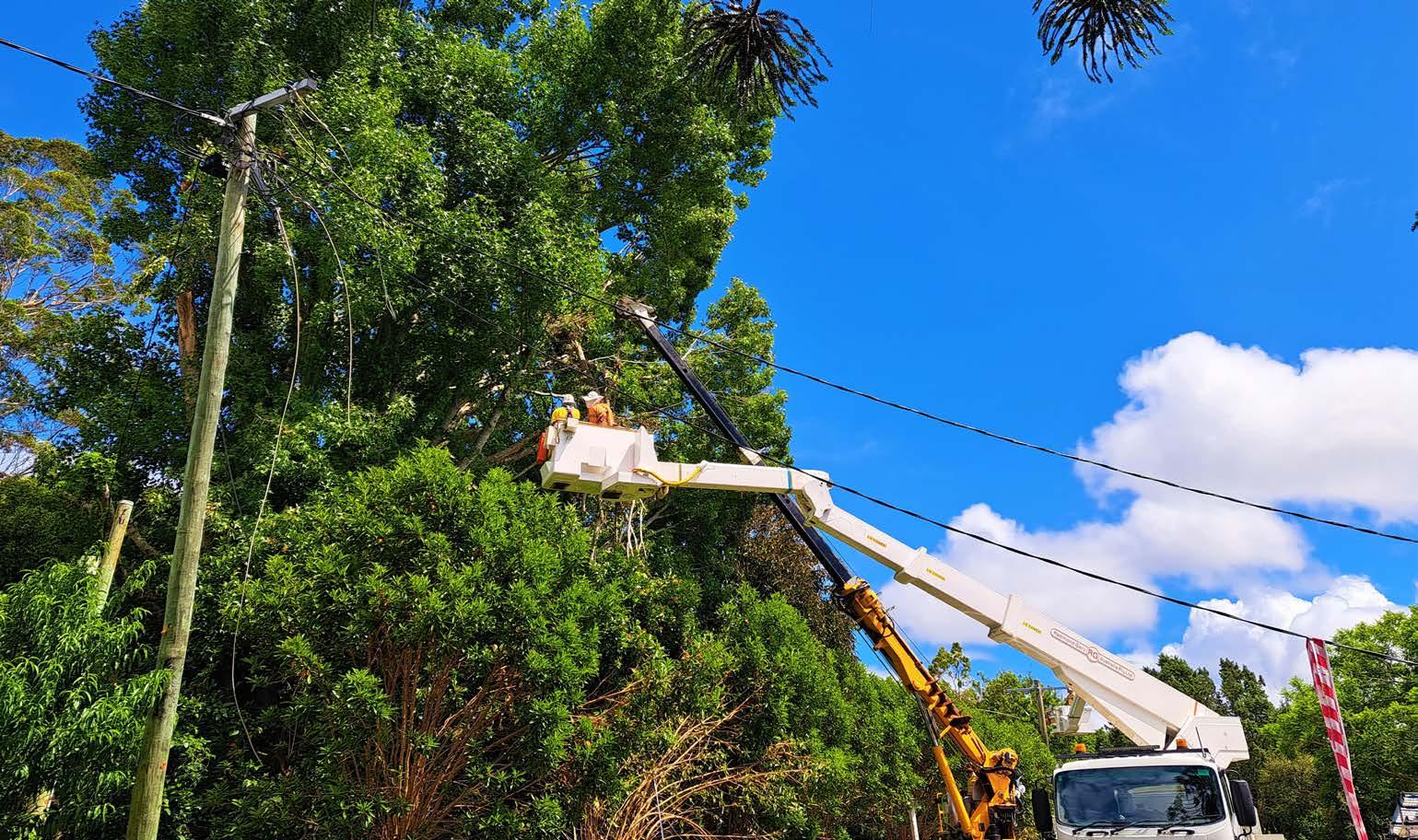
Human-Social recovery is the coordinated process of supporting disaster affected individuals, families and communities towards the restoration of emotional, social, economic and physical wellbeing following a disaster. Services typically include provision of information, payment of financial assistance, and provision of personal and psychosocial support.
Human and Social Recovery aims to:
Assist communities to access information in a timely and accurate manner.
Assist communities to reconnect with families, friends and community networks.
Enable communities to manage their own recovery through access to information, services, practical assistance measures or financial support.
Assist communities to access to emotional, psychosocial or mental health support.
Local Human and Social Recovery is supported by the District Human and Social Recovery Committee, which is chaired by the Department of Treaty, Aboriginal and Torres Strait Islander Partnerships, Communities and the Arts.
Large-scale disruption to, or loss of infrastructure may cause severe hardships for the Scenic Rim community and significantly affect the management and delivery of recovery services. Infrastructure and services will be restored in conjunction with relevant agencies.
Infrastructure Recovery aims to:
Assess damage to infrastructure across the impacted area to assess extent and severity of damage.
Facilitate immediate, short term and longer-term temporary accommodation solutions for displaced community members.
Conduct damage assessments and coordinate clean-up, repair and restoration of essential facilities and services.
Provide advice and support about timely safety inspections and reconnection of essential services.
Provide advice and coordinate clean up and disposal of hazardous materials or debris from public areas.
The immediate priorities for Scenic Rim will be focused on restoring essential services necessary for a viable community. While social recovery and welfare services provide immediate relief and support, a comprehensive assessment of the economic impacts of the disaster, in consultation with key stakeholders such as the business community, tourism operators and government agencies, will need to be undertaken.
Economic Recovery aims to:
Address the impacts on key economic assets, employment issues and the capacity of local businesses to operate.
Minimise the effects on individuals and businesses.
Facilitate financial assistance and access to funds and loans.
Facilitate links with relevant agencies to source labour, re-establish supply chains or undertake marketing and promotional activities.
Following a disaster event, Scenic Rim Regional Council in collaboration with the relevant State and Federal agencies will organise an assessment of key natural assets that will form the basis for determining environmental recovery priorities. Disasters can have serious effects on the natural environment and can have a profound impact on community recovery.
Environmental Recovery aims to: Identify and monitor impacts on the environment.
Coordinate and prioritise rehabilitation of impacted or at-risk natural resources.
Monitor potential water quality issues.
Monitor and advise on public health matters.
The Local Recovery Coordinator (LRC) is appointed by the LDMG Chair and will be responsible for managing and coordinating the business of the LRRG to support the functions in accordance with this plan and the recovery operational response during the disaster event.
The role of the LRC is to:
Coordinate and support as the Deputy Chair of the LRRG.
Report to the LDMG.
Work closely with the Local Disaster Coordinator (LDC) to achieve recovery objectives. Liaise with functional lead agency representatives and key stakeholders.
Coordinate the short to medium-term recovery to address the immediate effects of the disaster and develop longer-term measures as appropriate.
Ensure the Local Event Specific Recovery Plan addresses all relevant functional areas of recovery including human and social, economic, environment and infrastructure (roads, transport and buildings).
Perform the role of conduit between community and the LDMG, through the LDC.
Develop and implement effective strategies for community participation and partnership in the recovery process.
Provide advice to relevant agencies on the needs and responses of the affected individuals, communities and other sectors.
Undertake post-operations debrief and provide a final report to the LDMG at the conclusion of recovery operations.

Recovery planning and preparation begin while the response phase is still active. During this time, the Local Recovery Coordinator (LRC) will be guided and informed by the Local Disaster Coordinator (LDC).
Once recovery operations are underway, the Local Recovery & Resilience Group will take the lead, with the Local Disaster Coordination Centre (LDCC) remaining active to support the operational aspects of recovery activities.
As community services return to a ‘new normal,’ the support from the LDCC may be scaled back or stood down.
The Council has set up a Recovery Cell within the Local Disaster Coordination Centre (LDCC). This Cell will activate when the LDCC is operational, ensuring timely information gathering to prepare for recovery services.
The Recovery Cell’s main roles include:
Coordinating post-impact relief and early recovery planning. Providing situation awareness to the Local Recovery and Resilience Group (LRRG).
Developing a Community Needs Assessment to guide recovery efforts.
During the immediate postdisaster response, the focus will be on gathering intelligence and consulting with stakeholders to create an event-specific local recovery action plan.
Additionally, the Recovery Cell will advise the Local Recovery Coordinator (LRC) and Local Disaster Coordinator (LDC) on activating the LRRG, sub-groups and recovery service delivery models. 1. 2. 3. 4.
Transition to recovery relates to the transfer of the coordination role from the lead response agency to the lead recovery agency.
The transition from response to recovery at the local level will be informed by local circumstances, determined by the chairs of the LDMG or DDMG and formally noted at an LDMG meeting and local recovery arrangements will be activated.
Transition to recovery is influenced by the nature of the event and requires flexibility, some triggers may be:
Situation reports evidencing the de-escalation of response operations.
Status of response and immediate recovery/relief operations.
Impact and needs assessments.
Response and early recovery situations that may escalate. Anticipated recovery issues and risks.
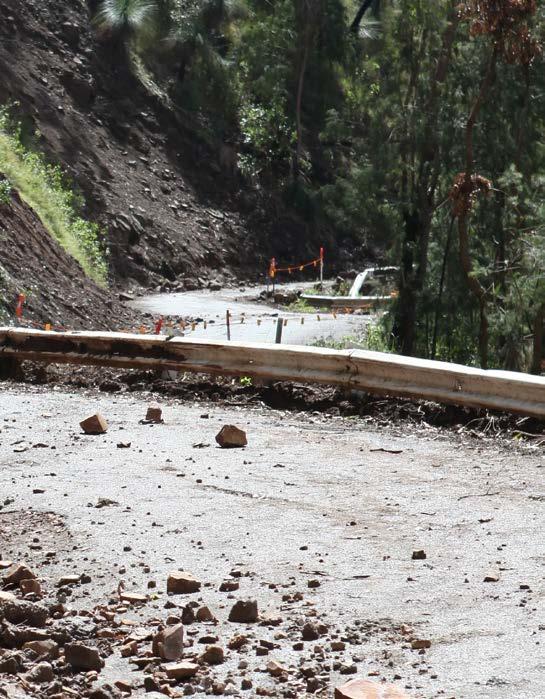
This plan will be activated by the Chairperson of the LRRG, or the LRC when the LRRG is activated and there is a need for a coordinated approach to assist with the recovery of the community. As the recovery phase continues, the LRRG Chair will allocate the responsibilities to manage the recovery process to the LRC and the LRRG. The nature of the disaster will determine the length of response and recovery operations. Due to the specific and evolving circumstances there is no defined timeframe for transition from one level of activation to the next.
Lean Forward
Stand Up
Stand Down
A heightened level of vigilance due to the possibility of an event in the area of responsibility. Some action maybe required however the situation should be monitored by someone capable of assessing the potential of the threat.
An operational state to prepare to ‘stand up’ characterised by a heightened level of situational awareness of disaster event (either current or impeding) and a state of operational readiness. Disaster coordination centres are prepared but not activated.
The operational state following ‘lean forward’ whereby resources are mobilised, personnel are activated and operational activities commenced. Disaster coordination centres are activated.
Transition from responding to an event back to normal core business and / or recovery operations. There is no longer a requirement to respond to the event and the threat is no longer present.
Recovery activities generally commence as soon as details of the event are known. They will be flexible and adaptive to different disaster events, enabling the integration and scaling up and down of recovery processes as required.
The activation of this plan does not replace the actions of individual agencies with regards to recovery, rather it supports these operations with coordinated efforts.
This sub plan is supported by and should be read in conjunction with the:
Scenic Rim Local Disaster Management Plan
Scenic Rim Spontaneous Volunteer and Donation Management Sub Plan
Scenic Rim Impact Assessment Management Sub Plan
Scenic Rim Public Information and Warnings Sub Plan
Scenic Rim Shelter Management Sub Plan
5.2.1 Local Services and
The Scenic Rim has local services that offer recovery supports and networks are well embedded in the community, during a disaster these services are required to enhance their offering of supports. When local services have been exhausted a request to District for further supports is required.
Recovery Hubs
Recovery Hubs are generally established by and are the responsibility of the Department of Treaty, Aboriginal and Torres Strait Islander Partnerships, Communities and the Arts (DTATSIPCA), in partnership with the LRRG to enable delivery of recovery services by multiple agencies from a single ‘One Stop Shop’ location.
These hubs support the relief and early recovery process of disaster affected individuals, households and communities by:
Providing direct provision of government and nongovernment information and services in one easy to access location.
Accelerating the administration of government processes and services.
Engaging recovery workers who understand the context of the disaster and the effects on individuals, households and communities.
A Recovery Hub can take many forms, depending on the scale of the impact, the type and volume of needs, availability and size of premises and geographical circumstances. In some instances, Recovery Hubs may not be required or could be established spontaneously by community, depending on the event and community need.
In some cases, the recovery services may be delivered as an Outreach model.
Outreach involves visiting disaster impacted persons at their disaster affected residence and/or temporary accommodation to provide one or more of the following service responses:
Deliver psychological first aid. Proactively assess the need for personal hardship assistance and/or to contribute to a general community needs assessment.
Provide information and resource materials to impacted community members.
Provide face to face service for persons identified in a referral as ‘at risk’ or unable to attend a recovery hub for one reason or another.
Make referrals to local services and support agencies, where required.
The progress of recovery efforts and the achievement of critical milestones will be regularly documented and reported. These reports will be prepared by the Local Recovery Coordinator (LRC), incorporating insights and contributions from recovery leads and relevant agencies. The primary goal of these reports is to ensure a comprehensive record of the recovery process while enabling ongoing monitoring and assessment of progress.
This structured approach will facilitate transparency, accountability and the identification of areas that may require additional focus or adjustment.
Event-specific recovery action plans are developed after an event, in conjunction with QRA to address the unique impacts of the disaster.
These plans are part of the broader State Recovery and Resilience Plan, which aims to support communities in recovering from disasters and building resilience against future events.
Event-Specific Recovery Action Plans include the following key components: Impact Assessment; Coordination and Governance; Recovery Activities; Resilience Building and Monitoring and Reporting. These plans are tailored to each disaster event, ensuring that recovery efforts are effective and responsive to the unique challenges faced by affected communities.
Response and recovery of a disaster event can have major financial impacts on local governments and communities. The costs associated with recovering from a natural disaster event may be recovered through the State Disaster Relief Arrangements (SDRA) and through activation of the
Disaster Recovery Funding Arrangements (DRFA).
SDRA is an all-hazards relief program that is funded entirely by the State and covers natural and non-natural disasters.
DRFA is joint Commonwealth and State government funding, providing financial assistance to
The evaluation of recovery activities is essential to maximise lessons identified and recognise where improvements can be made.
The evaluation can involve: Community and stakeholder surveys. Interviews. Workshops.
Assessment of key project outcomes.
Conducting an initial evaluation is recommended at an appropriate timing after an event.
The planning process for the transition from a full-scale recovery operation back to the usual level of Council involvement in a community, needs to commence very early in the recovery journey.
This allows roles and functions to return to normal as quickly as possible without leaving the community feeling abandoned or creating expectations of ongoing government services that cannot be maintained.
Systems and processes implemented to facilitate recovery require flexibility to adapt to evolving circumstances, and should be implemented in a way that helps affected
10Queensland Disaster Funding Guidelines (QDFG) 2021. Our role in disaster funding | Queensland Reconstruction Authority (qra.qld.gov.au)
help communities recover from eligible disasters.
The Queensland Disaster Funding Guidelines (QDFG 2021) details the activation, eligibility and other requirements for DRFA and SDRA10
communities to build capacity to manage their own longer-term recovery, rather than creating dependencies on new and temporary arrangements.
Clear terms of reference enable committees and other governance bodies to determine whether they have fulfilled their designated function and are able to disband. Recovery activities which are implemented as programs or projects will have defined budgets, deliverables and timeframes which clarify expectations for the community.
Social and personal support services are likely to be required in the longer term and the need for a considerable period of psychosocial support (often several years) should be planned for.

Resilience is the communities ability to withstand, adapt to and recover from the impacts of a disruptive event. It encompasses the community’s capacity to quickly restore essential services, rebuild infrastructure and return to a stable, functioning state with minimising long-term negative consequences. Resilient communities can learn from experience, strengthen social cohesion and improve their preparedness for future disasters, enhancing their ability to bounce back stronger and more adaptable.
The Queensland Strategy for Disaster Resilience11 outlines four key objectives to improve resilience to disasters:
1. Understand risk – applying data to improve understanding of risk reduction, culture and education to help Queensland communities become more resilient to future disasters.
2. Work together – increase the role of state-led coordination of resilience outcomes by enhancing cooperation and working across silos to implement whole-ofgovernment activities.
3. Seek new opportunities –leverage regional, local and community knowledge to enhance capability to drive best practice in building resilience.
4. Continuous improvement –clearer, more direct connection of funding to risk-based need.
An important part of a community’s recovery journey following a disaster is embedding recovery and resilience into ongoing service delivery and programming. This can be achieved by supporting community‐led initiatives, facilitating linkages, collaborating and partnering between and across groups and building upon the local strengths and capabilities of the affected communities. Respectful and meaningful engagement will ensure that communities have the ability to effectively plan for the long‐term sustainability of their communities and are best placed to build capacity in preparedness for and resilience to future disasters.
According to the Prevention, Preparedness, Response and Recovery Disaster Management Guideline, recovery from
11 Queensland Strategy for Disaster Resilience — https://www.qra.qld.gov.au/qsdr
a disaster is the taking of appropriate measures to recover from an event, including the action taken to support disaster affected communities in the reconstruction of infrastructure, the restoration of emotional, social, economic and physical wellbeing and the restoration of the environment.
Disasters have an impact on all aspects of a community. A community’s resilience after a disaster will affect the length of the recovery process. The following are examples of assets in a community which can be affected by a disaster:
Human capital: The knowledge, skills and health that people invest in and accumulate throughout their lives, enabling them to realise their potential as productive members of society.
Social capital: A set of shared values or resources that allows individuals to work together in a group to effectively achieve a common purpose.
Physical capital: Tangible assets such as houses, vehicles, equipment, information technology, communications and livestock.
Natural capital: Natural resources such as access to land, fresh air, waterways, wildlife, flora, and fauna.
Financial capital: Savings, tradeable commodities, access to regular income, insurance.
Disaster resilience requires a collaborative approach between all recovery agencies, nongovernment organisations and local communities to work together to make a real difference.
The Scenic Rim Regional Council Local Resilience Action Plan (LRAP) will better position Council for future resilience funding opportunities by clearly outlining Councils priorities that have been identified to improve resilience and assist the State in identifying local and regional
priorities to inform any potential future funding opportunities.
Benefits of the LRAP:
Aligns Council for future funding opportunities. Identifies high priorities resilience actions for the Local Government Area.
Live document that can be used to strengthen local disaster resilience for the community, which is therefore better equipped with increasing natural disasters. Support the council to be proactive and identify priorities for their needs.
